
Choosing the right light bulb: Everything you need to know
Search
All About Light Bulbs and how to Choose them
This comprehensive guide covers everything you need to know about light bulbs, from their shapes and brightness levels to energy efficiency, color temperature, and compatibility with different fixtures. Whether you’re looking to upgrade your lighting to save on energy costs or to create a specific mood in your living space, this guide will help you make informed choices.
Our experts have written specialized in-depth articles for each topic, which we encourage you to visit at the links below. Otherwise you can read on for a shorter summary.
The different types of light bulb technologies
Choosing the right light bulb base for the socket
How to safely screw in various kinds of light bulbs
The different shapes of light bulbs
Smart Bulbs, their benefits and features
How to find the brightness of a light bulb
The different colors of bulbs, warm white, cool white and more
What are Full Spectrum and Natural Daylight bulbs?
What is Color Rendering Index (CRI), and why does it matter
How to avoid glare and harsh light
Wattage, what is it and does it matter?
When light bulbs get hot take safety precautions
How long do they last and when will they need replacing
How much do they really cost to run?
The new laws and what you need to know
Where to buy new replacement bulbs
The Different Types of Light Bulb Technologies
There are several types of light bulb technologies available, each with unique features, benefits, and limitations. Understanding these differences can help you select the most suitable option for your needs.
Incandescent Bulbs
- Description: Incandescent bulbs produce light by heating a filament until it glows. They emit a warm, inviting light and are known for their simplicity and affordability.
- Pros: Low initial cost, warm light, widely compatible with dimmers.
- Cons: Short lifespan (around 1,000 hours), high energy consumption, and heat generation.
Compact Fluorescent Lamps (CFLs)
- Description: CFLs use a small amount of mercury vapor to produce light when an electric current passes through. They are more energy-efficient than incandescent bulbs.
- Pros: Longer lifespan than incandescents, energy-efficient, available in various color temperatures.
- Cons: Longer warm-up time, contains mercury (requires special disposal), less dimming capability.
Light Emitting Diodes (LEDs)
- Description: LEDs use semiconductors to convert electricity into light. They are the most energy-efficient and long-lasting bulbs available.
- Pros: Extremely long lifespan (up to 25,000 hours), low energy consumption, instant-on, available in multiple colors and styles, good dimming capability.
- Cons: Higher initial cost, light quality may vary between manufacturers.
Halogen Bulbs
- Description: Halogen bulbs are a type of incandescent bulb with improved efficiency. They produce a bright, white light and are often used in spotlights and floodlights.
- Pros: Brighter light, better energy efficiency than standard incandescents, compact size.
- Cons: Short lifespan, can become extremely hot, sensitive to oils and handling.
Choosing the Right Light Bulb Base for the Socket
The base of a light bulb is the part that connects to the socket, and it comes in various sizes and types. Choosing the correct base is essential for ensuring compatibility with your fixture.
Common Light Bulb Base Types
- Edison Screw Base (E26/E27): The standard base type for many household bulbs. E26 is used in the US, while E27 is used in Europe and other regions.
- Small Edison Screw Base (E12/E14): Smaller screw bases found in decorative fixtures such as chandeliers and candelabras.
- GU10 Base: A two-pin base with small, rounded ends, commonly used in track lighting and recessed fixtures.
- G9 Base: A two-pin base with a looped wire, often found in specialty fixtures and desk lamps.
- Bi-Pin Base (G4, G5, G13, etc.): Two-prong bases used in tube lights and some specialty bulbs.
How to Ensure Compatibility
- Check the fixture’s socket type and size before purchasing a bulb to ensure it matches the bulb’s base type.
- If the bulb’s base does not fit securely in the socket, consider using an adapter to convert the base size (e.g., E27 to E14).
- Avoid forcing bulbs into sockets to prevent damaging the fixture or bulb base.
How to Safely Screw in Various Kinds of Light Bulbs
Screwing in light bulbs safely is crucial to avoid damage to the bulb, socket, and potential injury. Different types of bulbs require different handling techniques to ensure proper installation.
Standard Screw-in Bulbs (Edison Bases)
- Turn off the power to the fixture to avoid electric shock.
- Carefully insert the bulb into the socket and twist it clockwise until snug, but avoid overtightening.
- If the bulb does not fit easily, double-check the base type and size for compatibility.
Pin-Based Bulbs (GU10, G9, Bi-Pin)
- Align the pins with the slots in the socket and gently push the bulb in place.
- For GU10 bulbs, twist the bulb slightly to lock it into position.
- Avoid applying excessive force to prevent bending or breaking the pins.
Handling Halogen Bulbs
- Use a clean cloth or gloves when handling halogen bulbs to avoid oils from your skin, which can cause the bulb to overheat.
- Ensure the bulb is securely seated in the socket, but do not overtighten as it can damage the fixture.
Replacing CFLs
- Grip the base of the CFL (not the glass tube) and gently twist it counterclockwise to remove.
- To install, carefully insert the base into the socket and twist clockwise until it is securely in place.
The Different Shapes of Light Bulbs
Light bulbs come in a wide variety of shapes and sizes, each suited for specific uses and fixtures. Understanding the different shapes can help you choose the best bulb for your needs.
Common Light Bulb Shapes
- Standard A-shape: The A19 is the most common bulb shape, often used in household lamps and ceiling fixtures.
- Globe bulbs: Larger round bulbs typically used in decorative fixtures like vanities and pendant lights.
- Candle or flame-shaped bulbs: Designed for chandeliers and wall sconces, adding a touch of elegance.
- Tube bulbs: Commonly used in under-cabinet lighting, task lights, and some overhead fixtures.
Choosing the Right Shape for Each Application
- General Lighting: Use standard A-shaped bulbs for table lamps and overhead lights.
- Decorative Fixtures: Globe and candle-shaped bulbs work best for accent lighting in decorative fixtures.
- Directional Lighting: Reflector and PAR bulbs provide focused light for task or accent lighting.
Smart Bulbs, Their Benefits and Features
Smart bulbs offer a range of features beyond basic lighting. They can be controlled remotely, change colors, and integrate with home automation systems.
Key Benefits of Smart Bulbs
- Remote Control: Use a smartphone app or voice assistant to control your bulbs from anywhere.
- Color Changing: Adjust the color and brightness to suit different moods and settings.
- Scheduling and Automation: Set timers, schedules, and even sync your lighting to other smart devices.
- Energy Efficiency: Many smart bulbs use LED technology, which consumes less power than traditional bulbs.
How to Find the Brightness of a Light Bulb
The brightness of a light bulb is measured in lumens, not watts. Understanding lumens helps you choose the right brightness for each room or fixture.
Lumens vs. Watts
- Lumens: Measure the total amount of visible light emitted by a bulb. The higher the lumens, the brighter the light.
- Watts: Measure the amount of energy a bulb consumes. Modern energy-efficient bulbs provide the same brightness with lower wattage.
Choosing the Right Brightness
- For Reading and Task Lighting: Use bulbs with 450 lumens or more.
- For Ambient Lighting: 200 to 300 lumens work well for a soft, background glow.
- For Large Rooms: Consider bulbs with 800 lumens or more for general overhead lighting.
The Different Colors of Bulbs: Warm White, Cool White, and More
Light bulbs come in various color temperatures, measured in Kelvins (K). The color temperature affects the ambiance and functionality of a space.
Understanding Color Temperature
- Warm White (2,700–3,000K): Produces a yellowish light, ideal for living rooms and bedrooms.
- Cool White (4,000–5,000K): Emits a brighter, more neutral light, suitable for kitchens and bathrooms.
- Daylight (5,000K+): Mimics natural daylight, making it a good choice for workspaces and areas where bright, clear lighting is needed.
What are Full Spectrum and Natural Daylight Bulbs?
Full spectrum and natural daylight bulbs provide light that closely matches natural sunlight, offering better color accuracy and comfort for specific applications.
Benefits of Full Spectrum Lighting
- Improved Color Accuracy: These bulbs offer a high CRI, making colors appear more vibrant and true to life.
- Health and Wellness: Full spectrum lighting can reduce eye strain and improve mood, particularly in areas with limited natural light.
- Applications: Ideal for art studios, offices, and any environment where color accuracy and comfort are important.
What is Color Rendering Index (CRI), and Why Does It Matter?
CRI measures a bulb’s ability to accurately reproduce colors compared to natural light. Higher CRI values indicate better color rendering, which is essential in many settings.
Understanding CRI Ratings
- CRI of 80 or Above: Considered good for general-purpose lighting.
- CRI of 90 or Above: Ideal for areas where color accuracy is crucial, such as kitchens and bathrooms.
How to Avoid Glare and Harsh Light
Glare and harsh light can cause discomfort and eye strain. Learning how to reduce glare helps improve visual comfort in your home or workspace.
Types of Glare
- Direct Glare: Occurs when the light source is too bright or not shielded properly.
- Reflected Glare: Happens when light bounces off shiny surfaces and causes reflections.
Wattage: What Is It and Does It Matter?
Wattage measures the amount of energy a bulb consumes. While wattage used to indicate brightness, modern bulbs use lumens as a better measure of light output.
Wattage Compatibility with Fixtures
- Ensure the bulb’s wattage is compatible with the fixture’s maximum wattage rating to avoid overheating and fire hazards.
When Light Bulbs Get Hot: Take Safety Precautions
Some bulbs, especially incandescents and halogens, can become very hot when in use. Taking safety precautions helps prevent burns and fire hazards.
Safe Handling and Replacement
- Turn off power and let the bulb cool before handling or replacing it.
- Use gloves or a cloth if the bulb is still warm to avoid burns.
How Long Do They Last and When Will They Need Replacing?
The lifespan of a light bulb depends on its type and usage. Understanding typical lifespans can help you plan replacements.
Average Lifespans by Bulb Type
- Incandescent: Around 1,000 hours, or roughly a year of use with normal use (3 hours per day).
- LED: Up to 25,000 hours or more, lasting up to 22 years.
How Much Do They Really Cost to Run?
The total cost of running a light bulb includes both the purchase price and ongoing energy consumption. Understanding these costs helps make informed decisions.
Calculating Energy Costs
- Multiply the bulb’s wattage by the number of hours used, then divide by 1,000 to get kilowatt-hours (kWh).
- Multiply kWh by your local energy rate to determine the cost of running the bulb.
The New Laws and What You Need to Know
Recent changes in lighting regulations have banned certain types of inefficient bulbs. Understanding these laws helps ensure compliance and smart choices.
Bans on Inefficient Bulbs
- Incandescent and halogen bulbs are being phased out in many countries.
Where to Buy New Replacement Bulbs
Replacement bulbs are available from local hardware stores, supermarkets, specialty lighting stores, and online retailers. Choose the right source based on your needs and the type of bulb required.
Conclusion
Choosing the right light bulbs for your home or office involves understanding the different shapes, technologies, brightness levels, and regulations. Modern energy-efficient options like LEDs provide long-lasting, versatile solutions for almost any application. By considering factors such as compatibility, color rendering, and total cost of ownership, you can make informed choices that improve the quality of your lighting while saving on energy costs.
Explore Topics

Table of Contents
Choosing the right light bulb: Everything you need to knowAll About Light Bulbs and how to Choose themThe Different Types of Light Bulb TechnologiesChoosing the Right Light Bulb Base for the SocketHow to Safely Screw in Various Kinds of Light BulbsThe Different Shapes of Light BulbsSmart Bulbs, Their Benefits and FeaturesHow to Find the Brightness of a Light BulbThe Different Colors of Bulbs: Warm White, Cool White, and MoreWhat are Full Spectrum and Natural Daylight Bulbs?What is Color Rendering Index (CRI), and Why Does It Matter?How to Avoid Glare and Harsh LightWattage: What Is It and Does It Matter?When Light Bulbs Get Hot: Take Safety PrecautionsHow Long Do They Last and When Will They Need Replacing?How Much Do They Really Cost to Run?The New Laws and What You Need to KnowWhere to Buy New Replacement BulbsConclusionCommentsShopping Ideas
Trending
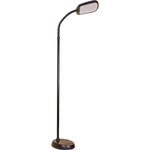
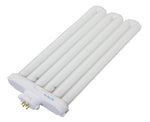

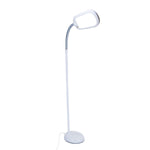

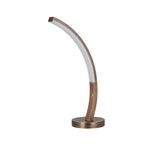
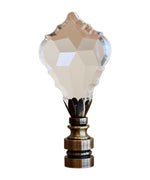
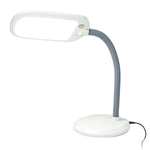
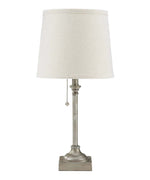

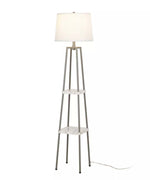










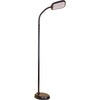


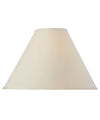



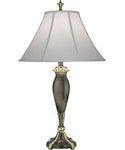
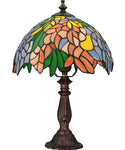
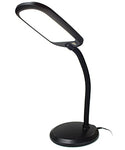
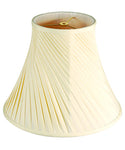
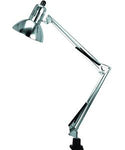
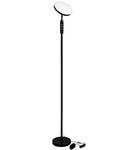
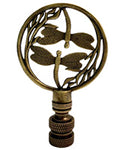
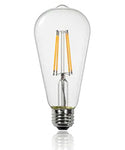
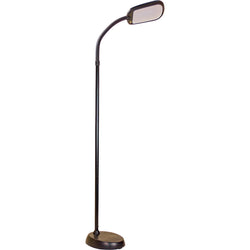
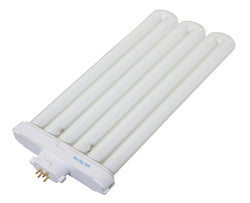
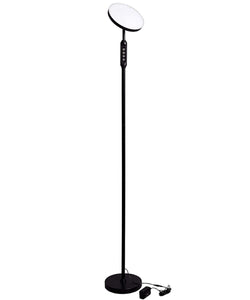
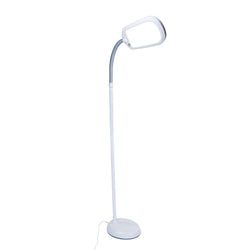
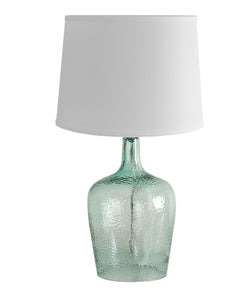

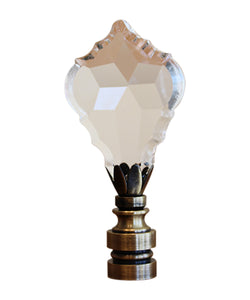



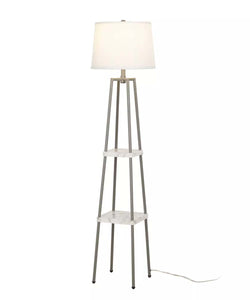



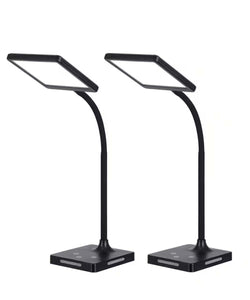





Comments